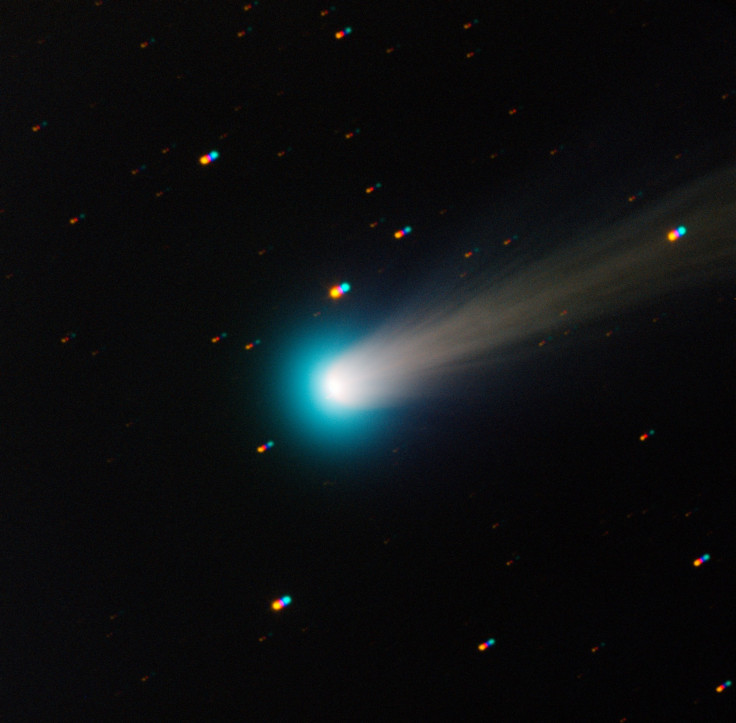Comet ISON Cometh: Two Fragments Breaking Away From Comet’s Nucleus May Explain Brightness Increase
Comet ISON finally increased in brightness earlier this month. New photos reveal an extremely bright comet, but what caused this recent boost in activity? Researchers from the Max Planck Society believe two fragments that separated from ISON’s nucleus may explain the recent uptick in brightness observed by amateur and professional astronomers.

The new image from the Wendelstein Observatory of the Ludwig Maximilian University, LMU, in Munich and the Max Planck Society, MPS, reveals a U-shaped ISON. The comet’s “wings” may be due to two nucleus fragments that have broken off. These fragments have surfaces that are burning up as ISON heads toward the sun.
Earlier photos, like the one taken by Hubble or the European Southern Observatory, do not show this wing feature, known as coma wings, of ISON, but later images reveal the two nucleus fragments. The ESO’s photo was taken on Nov. 9, while the image from LMU/MPS was taken Nov. 16. As noted by ESO, two outbursts, one on Nov. 1 and another on Nov. 13, increased ISON’s brightness by a factor of 10.

Hermann Böhnhardt of MPS said in a statement, “Features like these typically occur after individual fragments break off the nucleus.” The scientists could not say for certain whether the fragmentation triggered the recent increase in brightness, but previous research has shown an association between the two events.
According to Böhnhardt, ISON may have lost only one or two fragments, but scientists are paying close attention to the comet as it makes an incredibly close pass around the sun. The comet could easily disintegrate due to the heat, as ISON is passing just 745,645 miles, 1.2 million kilometers, from the surface of the sun. It is also possible the comet could lose more fragments ahead of its date with the sun, with Böhnhardt saying, “According to past experience, comets that have once lost a fragment tend to do this again.”
ISON, known as C/2012 S1, was discovered in 2012 and due to its size and close brush with the sun was hyped to be the “comet of the century.” After the comet completes its pass around the sun on Nov. 28 it may be visible from Earth with the naked eye during the day.
© Copyright IBTimes 2024. All rights reserved.





















